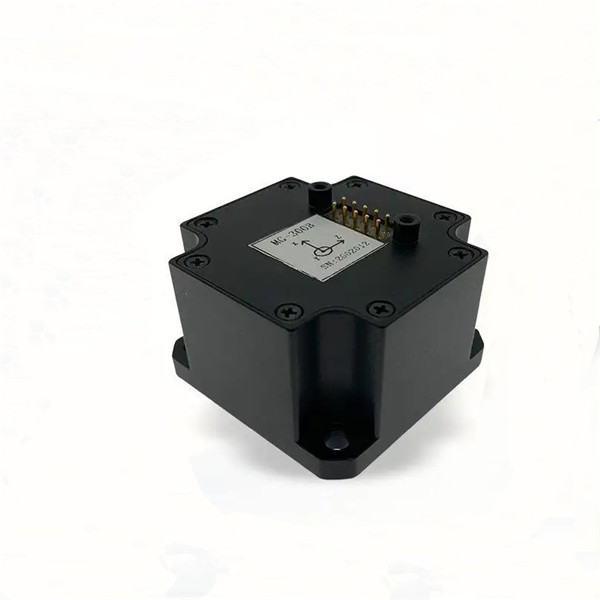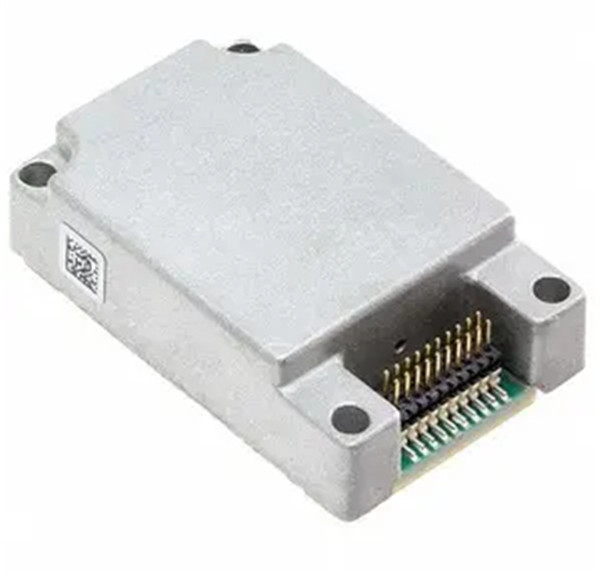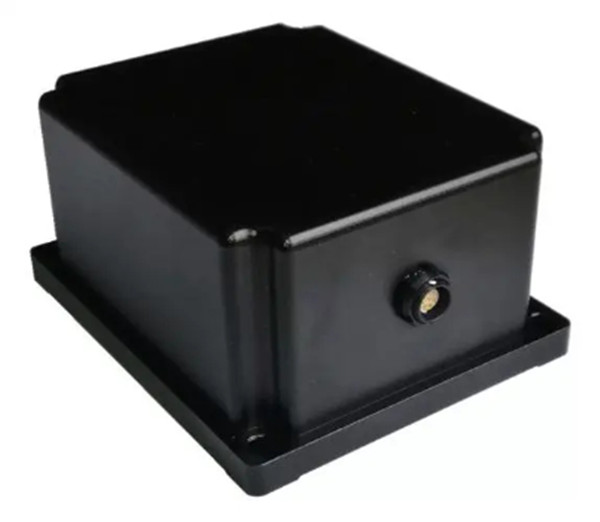Inertial sensors include accelerometers (also called acceleration sensors) and angular velocity sensors (also called gyroscopes), as well as their single-, dual-, and triple-axis combined inertial measurement units (also called IMUs) and AHRS.
The accelerometer is composed of a detection mass (also called a sensitive mass), a support, a potentiometer, a spring, a damper and a shell. In fact, it uses the principle of acceleration to calculate the state of an object moving in space. At first, the accelerometer only senses the acceleration in the vertical direction of the surface. In the early days, it was only used in the instrument system for detecting aircraft overload. After functional upgrades and optimizations, it is now possible to actually sense the acceleration of objects in any direction. The current mainstream is the 3-axis accelerometer, which measures the acceleration data of the object on the three axes of X, Y, and Z in the space coordinate system, which can fully reflect the movement properties of the object's translation.

The earliest gyroscopes are mechanical gyroscopes with built-in high-speed rotating gyroscopes. Because the gyroscope can maintain high-speed and stable rotation on the gimbal bracket, the earliest gyroscopes are used in navigation to identify the direction, determine the attitude and calculate the angular velocity. Later, gradually Used in aircraft instruments. However, the mechanical type has high requirements on processing accuracy and is easily affected by external vibration, so the calculation accuracy of the mechanical gyroscope has not been high.
Later, in order to improve accuracy and applicability, the principle of gyroscope is not only mechanical, but now laser gyroscope (the principle of optical path difference), fiber optic gyroscope (Sagnac effect, optical path difference principle) have been developed. a) and a microelectromechanical gyroscope (ie MEMS, which is based on the Coriolis force principle and uses its internal capacitance change to calculate the angular velocity, MEMS gyroscopes are the most common in smartphones). Due to the application of MEMS technology, the cost of IMU has also dropped a lot. At present, it is widely used, and most people use it, ranging from mobile phones and automobiles to airplanes, missiles, and spacecraft. It is also the above-mentioned different precisions, different application fields, and different costs.

In October last year, inertial sensor giant Safran acquired the soon-to-be-listed Norwegian manufacturer of gyroscope sensors and MEMS inertial systems Sensonor to expand its business scope into MEMS-based sensor technology and related applications,
Goodwill Precision Machinery has mature technology and experience in the field of MEMS module housing manufacturing, as well as a stable and cooperative customer group.
The two French companies, ECA Group and iXblue, have entered into the pre-merger stage of exclusivity negotiations. The merger, promoted by the ECA Group, will create a European high-tech leader in the fields of maritime, inertial navigation, space and photonics. ECA and iXblue are long-term partners. Partner, ECA integrates iXblue's inertial and underwater positioning systems into its autonomous underwater vehicle for naval mine warfare.
Inertial Technology and Inertial Sensor Development
From 2015 to 2020, the compound annual growth rate of the global inertial sensor market is 13.0%, and the market size in 2021 is about 7.26 billion US dollars. At the beginning of the development of inertial technology, it was mainly used in the field of national defense and military industry. High precision and high sensitivity are the main features of inertial technology products for military industry. The most important requirements for the Internet of Vehicles, autonomous driving, and car intelligence are safety and reliability, and then comfort. Behind all of this is sensors, especially the increasingly widely used MEMS inertial sensors, also called inertial sensors. measurement unit.
Inertial sensors (IMU) are mainly used to detect and measure acceleration and rotational motion sensors. This principle is used in MEMS sensors with a diameter of nearly half a meter to fiber optic devices with a diameter of nearly half a meter. Inertial sensors can be widely used in consumer electronics, smart toys, automotive electronics, industrial automation, smart agriculture, medical equipment, instrumentation, Robots, construction machinery, navigation systems, satellite communications, military weapons and many other fields.
The current clear high-end inertial sensor segment
Inertial sensors are essential in navigation and flight control systems, all types of commercial aircraft, and satellite trajectory correction and stabilization.
The rise of constellations of micro and nanosatellites for global internet broadband and remote Earth monitoring, such as SpaceX and OneWeb, is driving the demand for satellite inertial sensors to unprecedented levels.
Growing demand for inertial sensors in commercial rocket launcher subsystems further boosts the market demand.
Robotics, logistics and automation systems all require inertial sensors.
In addition, as the autonomous vehicle trend continues, the industrial logistics chain is undergoing a transformation.
The sharp increase in downstream demand promotes the soaring usage of the domestic market
At present, the technology in the domestic VR, UAV, unmanned, robot and other technological consumption fields is becoming more and more mature, and the application is gradually popularized, which drives the domestic consumer MEMS inertial sensor market demand to increase day by day.
In addition, in the industrial fields of petroleum exploration, surveying and mapping, high-speed railway, communication in motion, antenna attitude monitoring, photovoltaic tracking system, structural health monitoring, vibration monitoring and other industrial fields, the trend of intelligent application is obvious, which has become another factor for the continuous growth of the domestic MEMS inertial sensor market. A pusher.
As a key measurement device in the aviation and aerospace fields, inertial sensors have always been one of the key devices involved in national defense security. The majority of domestic inertial sensor production has always been the state-owned units directly related to national defense, such as AVIC, aerospace, ordnance, and China Shipbuilding.
Nowadays, the domestic inertial sensor market demand continues to be hot, foreign technical barriers are gradually being overcome, and domestic excellent inertial sensor companies are standing at the intersection of a new era.
As autonomous driving projects have begun to gradually transition from the development stage to medium and high volume production, it is foreseeable that there will be pressure in the field to reduce power consumption, size, weight, and cost while maintaining or expanding performance.
In particular, the realization of mass production of micro-electromechanical inertial devices has made inertial technology products widely used in civilian fields where lower precision can meet application requirements. At present, the application field and scale are showing a trend of rapid growth.

Post time: Mar-03-2023
